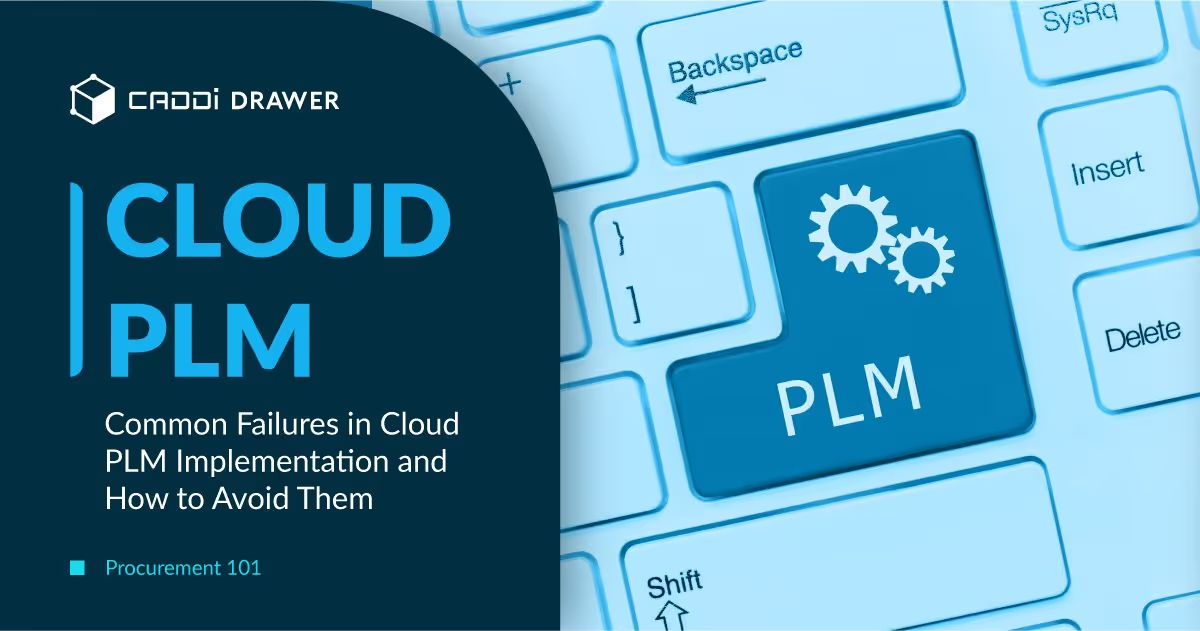Procurement 101: Global Sourcing – The Keys to Success with Aggregating Data

Table of Contents

Amidst the bustling activity of modern manufacturing, global sourcing emerges as a central element for operational efficiency and competitive advantage. As companies strive to balance cost, quality, and speed, the strategic procurement of goods and services from across the globe has never been more critical. This approach, however, is fraught with complexities and challenges that require innovative solutions and strategic foresight.
The Current State of Global Sourcing in Manufacturing
Global sourcing is no longer a mere option for manufacturing firms; it’s a necessity in a world where materials, talent, and innovation cross borders with ease. Yet, the landscape is anything but simple. From the KPMG Global Manufacturing Prospects 2023 report, it’s evident that global sourcing remains a critical concern for CEOs of large manufacturers across Europe, Asia, and North America. The survey underscores the balancing act between onshoring and offshoring, indicating that global sourcing strategies are pivotal in navigating economic downturns and achieving sustainable growth.
The narrative of success in global sourcing is punctuated with tales of triumph and caution. For instance, Tesla’s strategic partnership with Panasonic for battery production showcases the potential for innovation and cost reduction, leveraging the strengths of global markets. Conversely, the disruptions experienced by automotive manufacturers in 2020, where a reliance on single-source suppliers for critical components led to widespread production halts, serve as a stark reminder of the risks involved.
Key Benefits of Effective Global Sourcing
Despite the challenges, the rewards of effective global sourcing can be substantial. A pivotal 2019 study by The Hackett Group found companies that excel in procurement practices achieve up to 15% lower costs, alongside improved efficiency and speed to market. These leaders in global sourcing not only benefit from direct cost savings but also gain access to new markets and innovations, enhancing their competitiveness and resilience.
The advantages extend beyond financial metrics. Effective global sourcing strategies contribute to sustainability and social responsibility goals, by enabling companies to select suppliers that adhere to ethical practices and environmental standards. This alignment with broader corporate values is becoming increasingly important to stakeholders, including investors, customers, and employees.
Challenges in Global Sourcing
In the vast landscape of global sourcing, many companies embark on the journey with the goal of leveraging international markets to enhance their competitiveness, reduce costs, and access new innovations. However, despite these intentions, achieving a fully optimized global sourcing strategy remains a significant challenge for many. This discrepancy between ambition and reality is not due to a lack of effort or intent but is often the result of several complex factors that impact sourcing operations on a global scale.
Navigating Diversity: The sheer diversity of markets involves navigating a labyrinth of local regulations, cultural nuances, and economic conditions. Each sourcing location presents its own set of rules and standards, from environmental regulations to labor laws, making it a daunting task to ensure compliance across all procurement activities. The necessity to adapt procurement strategies to each locale complicates the standardization of processes, often leading to inefficiencies.
Communication Barriers: Managing supplier relationships across different time zones and languages adds another layer of complexity. Communication barriers, cultural misunderstandings, and differing business practices can hinder effective collaboration and slow down decision-making processes. These challenges are compounded when attempting to maintain consistent quality standards across a global supplier base, where varying levels of technology adoption and quality control practices can result in inconsistent product quality.
Data Silos: Data management, a critical component of global sourcing optimization, poses perhaps the most significant challenge. The need to aggregate, analyze, and act on procurement and supplier data from around the world requires sophisticated IT infrastructure and advanced analytics capabilities. Many companies find themselves struggling with fragmented information systems that are not fully integrated, leading to silos of data that are difficult to access and analyze comprehensively. This lack of real-time, actionable data visibility makes it challenging to respond swiftly to market changes, supply chain disruptions, or opportunities for cost savings.
Hidden Costs: Achieving cost efficiencies through global sourcing is often more complex than anticipated. Hidden costs such as tariffs, transportation, and the need for buffer stocks to mitigate supply chain risks can erode the expected savings. The global economic volatility and political uncertainties further complicate cost management, making it difficult to predict and plan for future sourcing expenses.
The Keys to Success in Global Sourcing
Success in global sourcing for manufacturers hinges on several critical factors that help navigate the complex landscape of international procurement. Here are the key elements to consider:
Strategic Supplier Selection
- Comprehensive Evaluation: Beyond cost, factors such as quality, reliability, capacity, and sustainability practices of suppliers must be assessed.
- Diversification: Building a diversified supplier base reduces dependency on any single source, mitigating risks associated with geopolitical tensions, supply chain disruptions, and market volatility.
Robust Risk Management
- Supply Chain Visibility: Having complete visibility into the supply chain allows for the early identification of potential risks and vulnerabilities.
- Contingency Planning: Developing and implementing contingency plans for critical supply chain disruptions ensures business continuity. It is also important to maintain a certain level of local supplier networks.
Effective Relationship Management
- Building Partnerships: Long-term partnerships with suppliers can lead to mutual benefits, including better terms and priority during supply shortages.
- Cultural Understanding: Acknowledging and respecting cultural differences improves communication and collaboration with international suppliers.
Advanced Data Analytics
- Data-Driven Decision Making: Utilizing advanced analytics to interpret procurement and supply chain data helps in making informed decisions.
- Technology Investment: Investing in the right technology platforms facilitates the integration, analysis, and sharing of procurement data across global operations.
Agile Procurement Processes
- Flexibility and Adaptability: Agile procurement processes allow manufacturers to respond quickly to market changes, supply chain disruptions, or shifts in consumer demand. When implementing or expanding global sourcing, it should not be rolled out broadly all at once. Instead, it should progress by testing in a few countries, achieving quick wins, and learning from unexpected events.
- Continuous Improvement: Regularly reviewing and optimizing sourcing strategies based on performance metrics and market trends.
Local Market Insights
- Localization: Adapting strategies to align with local standards, practices, and consumer preferences can enhance efficiency and effectiveness. Engaging in global sourcing does not mean that centralizing management will ensure success. It is crucial not to forget the importance of having dedicated individuals or teams with knowledge and experience in both sourcing and local markets.
- Understanding Local Markets: Deep insights into the economic, political, and cultural dynamics of sourcing markets can identify new opportunities and potential challenges. This is required not only of local teams but also of the headquarters team that manages sourcing across global operations.
Skill Development and Training
- Capacity Building: Investing in training for procurement teams on global sourcing best practices, negotiation skills, and risk management is essential.
- Cross-Functional Teams: Encouraging collaboration between procurement, finance, operations, and sales teams ensures alignment on global sourcing strategies.
How CADDi Drawer Can Help in Global Sourcing
As mentioned above, data is the compass that guides decision-making processes in the global sourcing. The ability to aggregate and analyze data from across the globe enables companies to identify efficiencies, mitigate risks, and uncover new opportunities.
Centralized data management facilitates a holistic view of the supply chain, empowering procurement managers to make informed decisions. For example, Cisco’s implementation of an advanced analytics platform has provided insights that led to a 10% decrease in procurement costs and improved supplier lead times by 15%. These improvements underscore the transformative potential of data-driven strategies in global sourcing.
CADDi Drawer is one of the solutions to these challenges. CADDi Drawer automatically links and aggregates design data, procurement data, and supplier information for each item (drawing), and can also produce outputs tied to the drawings. Through CADDi Drawer, data that tends to be scattered across countries and regions can be consolidated, while at the same time, members from various locations can smoothly access these data and gain insights and information from other regions..
Similarity search of part drawings
The similarity search function allows for the identification of which categories should be consolidated with which suppliers, based on price information and supplier information for each part category.

Streamline activities in the global sourcing process
The following features enable you to streamline the time-consuming tasks of data collection and organization in global sourcing operations.
- Price data and supplier information can be automatically linked to each drawing and can also be exported together.
- By using keyword searches combined with similarity searches, the time spent searching for drawings and data in procurement tasks can be reduced.

Amidst the bustling activity of modern manufacturing, global sourcing emerges as a central element for operational efficiency and competitive advantage. As companies strive to balance cost, quality, and speed, the strategic procurement of goods and services from across the globe has never been more critical. This approach, however, is fraught with complexities and challenges that require innovative solutions and strategic foresight.
The Current State of Global Sourcing in Manufacturing
Global sourcing is no longer a mere option for manufacturing firms; it’s a necessity in a world where materials, talent, and innovation cross borders with ease. Yet, the landscape is anything but simple. From the KPMG Global Manufacturing Prospects 2023 report, it’s evident that global sourcing remains a critical concern for CEOs of large manufacturers across Europe, Asia, and North America. The survey underscores the balancing act between onshoring and offshoring, indicating that global sourcing strategies are pivotal in navigating economic downturns and achieving sustainable growth.
The narrative of success in global sourcing is punctuated with tales of triumph and caution. For instance, Tesla’s strategic partnership with Panasonic for battery production showcases the potential for innovation and cost reduction, leveraging the strengths of global markets. Conversely, the disruptions experienced by automotive manufacturers in 2020, where a reliance on single-source suppliers for critical components led to widespread production halts, serve as a stark reminder of the risks involved.
Key Benefits of Effective Global Sourcing
Despite the challenges, the rewards of effective global sourcing can be substantial. A pivotal 2019 study by The Hackett Group found companies that excel in procurement practices achieve up to 15% lower costs, alongside improved efficiency and speed to market. These leaders in global sourcing not only benefit from direct cost savings but also gain access to new markets and innovations, enhancing their competitiveness and resilience.
The advantages extend beyond financial metrics. Effective global sourcing strategies contribute to sustainability and social responsibility goals, by enabling companies to select suppliers that adhere to ethical practices and environmental standards. This alignment with broader corporate values is becoming increasingly important to stakeholders, including investors, customers, and employees.
Challenges in Global Sourcing
In the vast landscape of global sourcing, many companies embark on the journey with the goal of leveraging international markets to enhance their competitiveness, reduce costs, and access new innovations. However, despite these intentions, achieving a fully optimized global sourcing strategy remains a significant challenge for many. This discrepancy between ambition and reality is not due to a lack of effort or intent but is often the result of several complex factors that impact sourcing operations on a global scale.
Navigating Diversity: The sheer diversity of markets involves navigating a labyrinth of local regulations, cultural nuances, and economic conditions. Each sourcing location presents its own set of rules and standards, from environmental regulations to labor laws, making it a daunting task to ensure compliance across all procurement activities. The necessity to adapt procurement strategies to each locale complicates the standardization of processes, often leading to inefficiencies.
Communication Barriers: Managing supplier relationships across different time zones and languages adds another layer of complexity. Communication barriers, cultural misunderstandings, and differing business practices can hinder effective collaboration and slow down decision-making processes. These challenges are compounded when attempting to maintain consistent quality standards across a global supplier base, where varying levels of technology adoption and quality control practices can result in inconsistent product quality.
Data Silos: Data management, a critical component of global sourcing optimization, poses perhaps the most significant challenge. The need to aggregate, analyze, and act on procurement and supplier data from around the world requires sophisticated IT infrastructure and advanced analytics capabilities. Many companies find themselves struggling with fragmented information systems that are not fully integrated, leading to silos of data that are difficult to access and analyze comprehensively. This lack of real-time, actionable data visibility makes it challenging to respond swiftly to market changes, supply chain disruptions, or opportunities for cost savings.
Hidden Costs: Achieving cost efficiencies through global sourcing is often more complex than anticipated. Hidden costs such as tariffs, transportation, and the need for buffer stocks to mitigate supply chain risks can erode the expected savings. The global economic volatility and political uncertainties further complicate cost management, making it difficult to predict and plan for future sourcing expenses.
The Keys to Success in Global Sourcing
Success in global sourcing for manufacturers hinges on several critical factors that help navigate the complex landscape of international procurement. Here are the key elements to consider:
Strategic Supplier Selection
- Comprehensive Evaluation: Beyond cost, factors such as quality, reliability, capacity, and sustainability practices of suppliers must be assessed.
- Diversification: Building a diversified supplier base reduces dependency on any single source, mitigating risks associated with geopolitical tensions, supply chain disruptions, and market volatility.
Robust Risk Management
- Supply Chain Visibility: Having complete visibility into the supply chain allows for the early identification of potential risks and vulnerabilities.
- Contingency Planning: Developing and implementing contingency plans for critical supply chain disruptions ensures business continuity. It is also important to maintain a certain level of local supplier networks.
Effective Relationship Management
- Building Partnerships: Long-term partnerships with suppliers can lead to mutual benefits, including better terms and priority during supply shortages.
- Cultural Understanding: Acknowledging and respecting cultural differences improves communication and collaboration with international suppliers.
Advanced Data Analytics
- Data-Driven Decision Making: Utilizing advanced analytics to interpret procurement and supply chain data helps in making informed decisions.
- Technology Investment: Investing in the right technology platforms facilitates the integration, analysis, and sharing of procurement data across global operations.
Agile Procurement Processes
- Flexibility and Adaptability: Agile procurement processes allow manufacturers to respond quickly to market changes, supply chain disruptions, or shifts in consumer demand. When implementing or expanding global sourcing, it should not be rolled out broadly all at once. Instead, it should progress by testing in a few countries, achieving quick wins, and learning from unexpected events.
- Continuous Improvement: Regularly reviewing and optimizing sourcing strategies based on performance metrics and market trends.
Local Market Insights
- Localization: Adapting strategies to align with local standards, practices, and consumer preferences can enhance efficiency and effectiveness. Engaging in global sourcing does not mean that centralizing management will ensure success. It is crucial not to forget the importance of having dedicated individuals or teams with knowledge and experience in both sourcing and local markets.
- Understanding Local Markets: Deep insights into the economic, political, and cultural dynamics of sourcing markets can identify new opportunities and potential challenges. This is required not only of local teams but also of the headquarters team that manages sourcing across global operations.
Skill Development and Training
- Capacity Building: Investing in training for procurement teams on global sourcing best practices, negotiation skills, and risk management is essential.
- Cross-Functional Teams: Encouraging collaboration between procurement, finance, operations, and sales teams ensures alignment on global sourcing strategies.
How CADDi Drawer Can Help in Global Sourcing
As mentioned above, data is the compass that guides decision-making processes in the global sourcing. The ability to aggregate and analyze data from across the globe enables companies to identify efficiencies, mitigate risks, and uncover new opportunities.
Centralized data management facilitates a holistic view of the supply chain, empowering procurement managers to make informed decisions. For example, Cisco’s implementation of an advanced analytics platform has provided insights that led to a 10% decrease in procurement costs and improved supplier lead times by 15%. These improvements underscore the transformative potential of data-driven strategies in global sourcing.
CADDi Drawer is one of the solutions to these challenges. CADDi Drawer automatically links and aggregates design data, procurement data, and supplier information for each item (drawing), and can also produce outputs tied to the drawings. Through CADDi Drawer, data that tends to be scattered across countries and regions can be consolidated, while at the same time, members from various locations can smoothly access these data and gain insights and information from other regions..
Similarity search of part drawings
The similarity search function allows for the identification of which categories should be consolidated with which suppliers, based on price information and supplier information for each part category.

Streamline activities in the global sourcing process
The following features enable you to streamline the time-consuming tasks of data collection and organization in global sourcing operations.
- Price data and supplier information can be automatically linked to each drawing and can also be exported together.
- By using keyword searches combined with similarity searches, the time spent searching for drawings and data in procurement tasks can be reduced.

Ready to see CADDi Drawer in action? Get a personalized demo.
Subscribe to our Blog!
Related Resources












.svg)



.svg)
.svg)
.svg)


